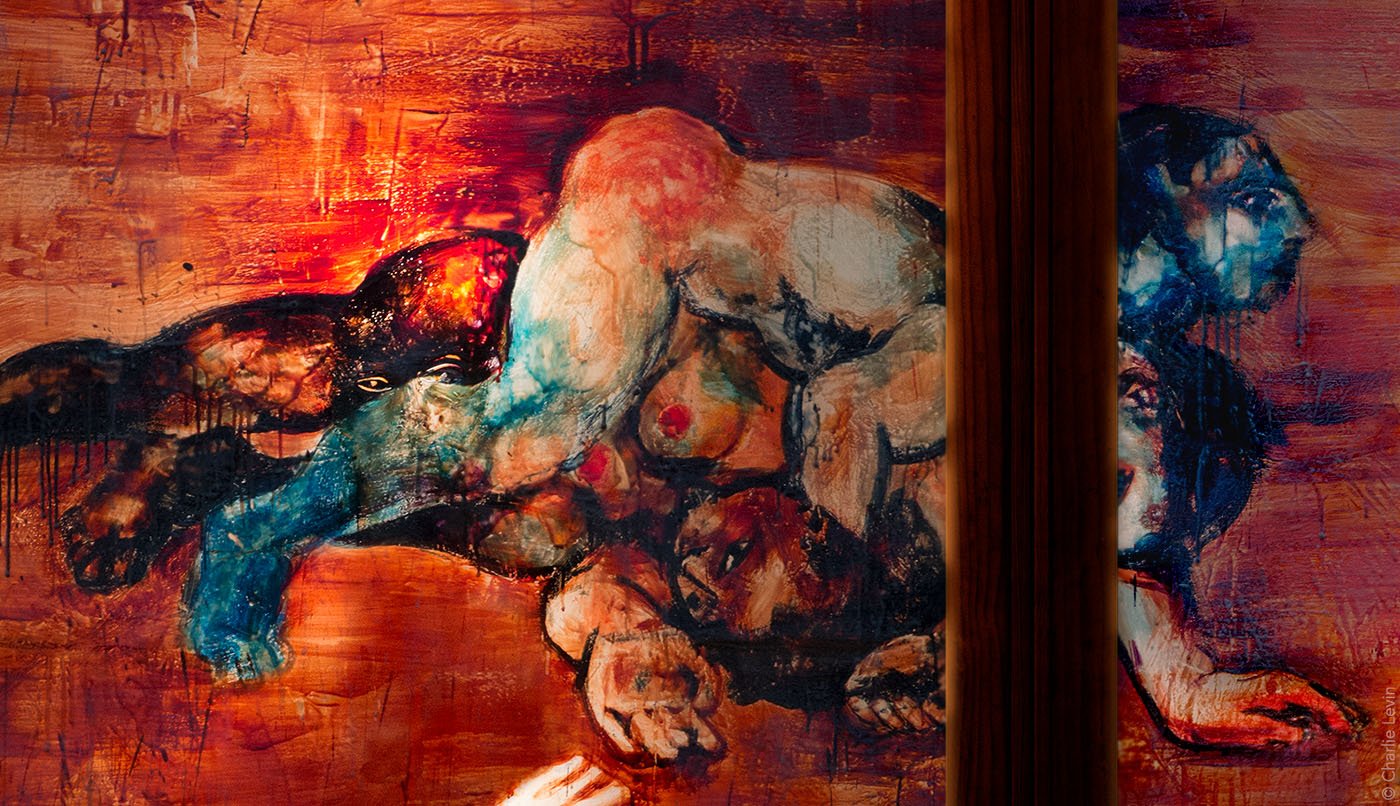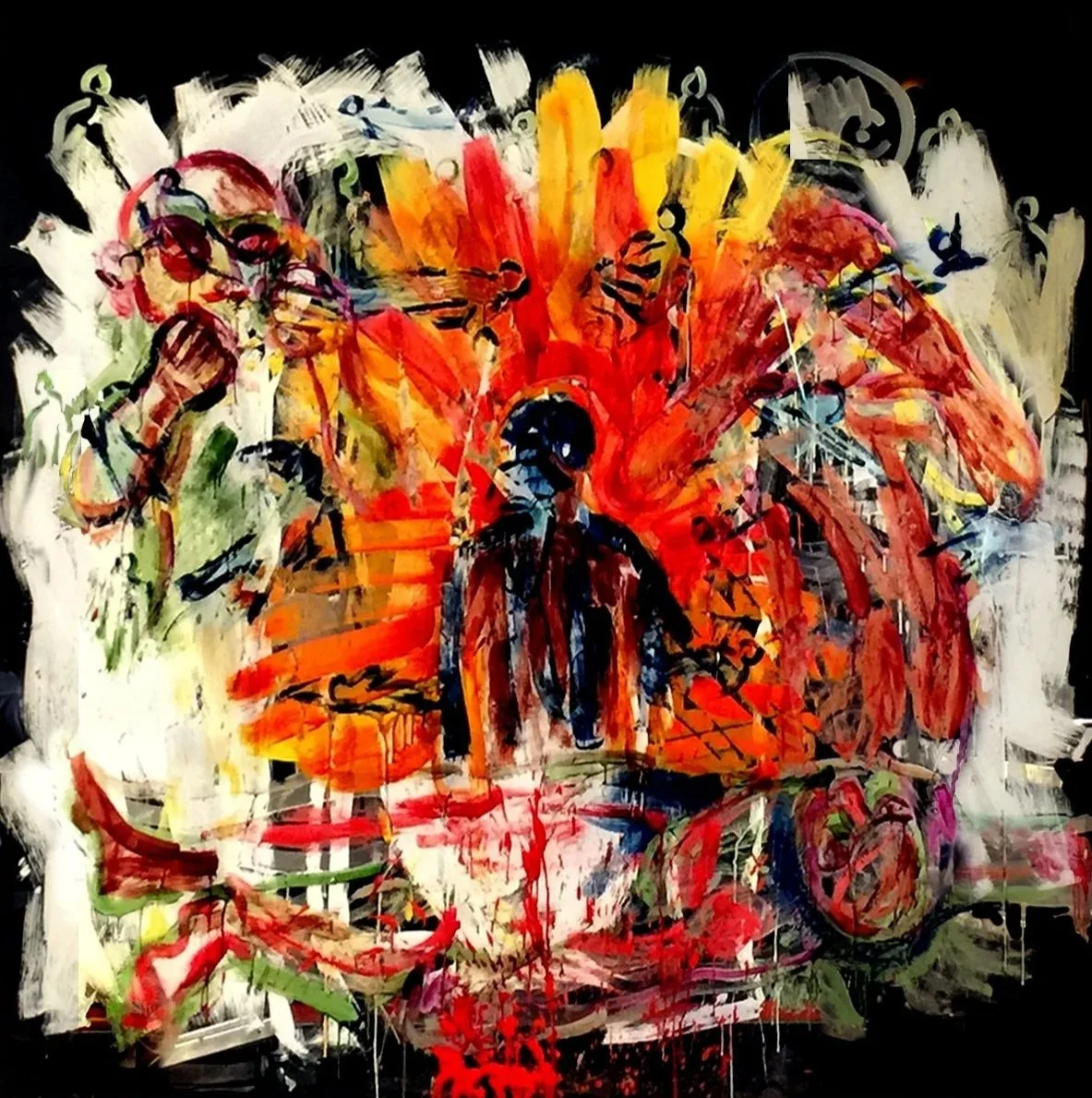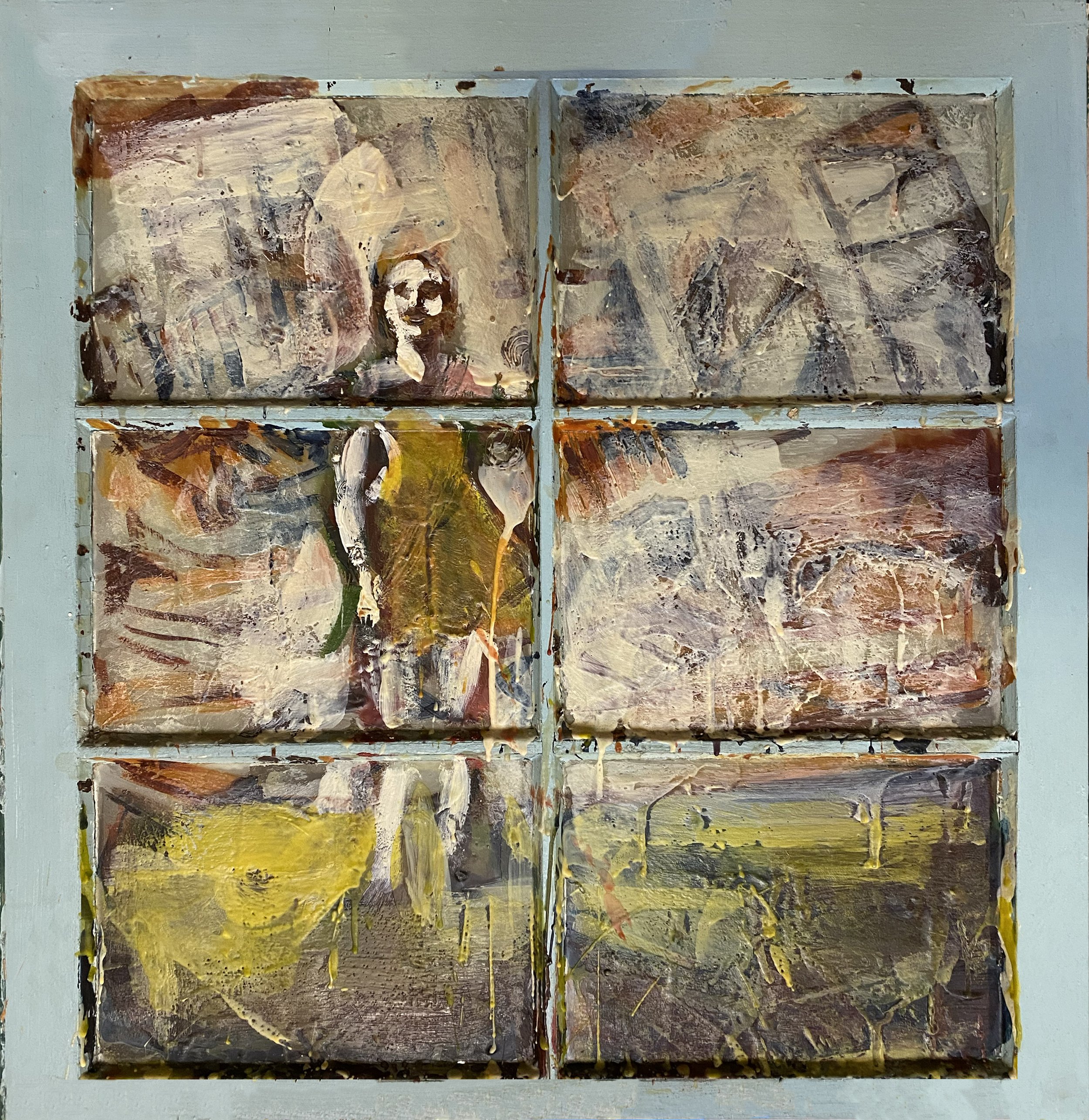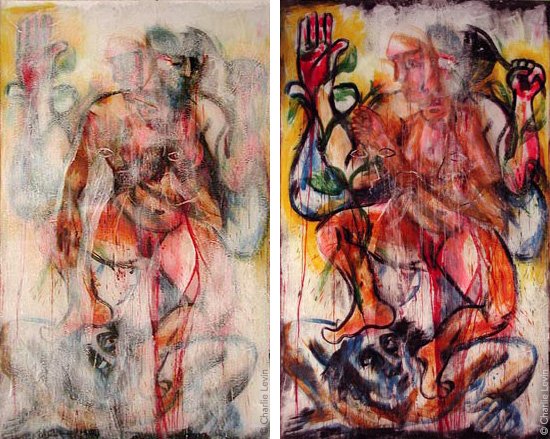Wax on plexiglas, with a second image revealed when illuminated from behind, triggered by a sensor. Simultaneously a painting and time-art, using electronic sensors.
I developed a painting method using translucent wax to layer two images — one revealed in front light, the other in backlight. A sensor triggers this shift, inviting the viewer’s presence to unveil the images beneath the surface. In front light, the wax reads as a tactile, material object. When illuminated from behind, its solidity dissolves into glowing transparency, revealing an unseen world.
Most of these paintings are larger-than life, providing an immersive experience that calls attention to the difference between physical and digital worlds.
These have been presented as wall-art with lightboxes and as free-standing installations.
Interactive Paintings
My interactive paintings are multi-layered translucent images in wax on glass that change with light. Depending on natural changes of light in a room or sensor-triggered LEDs, the work never appears as just one thing.
By layering images and controlling the transparency of the pigments, I build surfaces that reveal entirely different images depending on whether the light reflects off them or shines through. A single painting may hold two or three overlapping images. Interactivity and varied lighting add further complexity: dynamic lights can expose fragments of an image, while sensor timing may allow one viewer’s movement to reveal something only to the next. This creates a theatrical experience where image, light, technology, and audience affect each other.
The result is an object that resist singular definition. When an artwork has more than one state, which version is true? Each piece asks how meaning shifts with context, perspective, and presence—how one image can contain multiple histories or how a single story can hold contradictions. How does personal behavior influence what we see and assume to know? How do our choices change what others experience?
All that is changing in this painting is the light.




